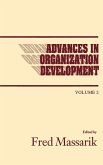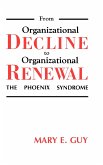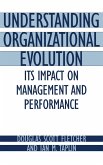Critical to the success of any organization is a characteristic called dynamism. Exactly the opposite of anhedonia, or listlessness, dynamism is identified with intensity, enthusiasm, and motivation, qualities that enable people in organizations to get things done. Psychologist Wayne Pace clarifies the meaning of dynamism and its various roles in organizational functioning, provides ways to enhance and measure it, and introduces to human resource professionals a new model of career progression based upon it. Better grounded in scientific principles and data than other books dealing with topics like vitality and enthusiasm and written in a direct, positive, credible, and easy to grasp style, Pace's book covers an unusually wide range of topics--from work systems to language and interpersonal style, to modes of thinking, to mindsets--all of which he sees as dimensions of organizational dynamism and all of which play crucial roles in saving the organization from anhedonia. He makes clear that we cannot design work systems that alone will compel outstanding performance. Instead, we must find ways to release the power of individual workers themselves. His book shows why work systems are so detrimental to enthusiasm and what can be done to reverse their effects. The result is an essential explication for human resource and organizational development specialists and an enlightening introduction for top management everywhere. Pace develops his ideas from a theory of credibility consisting of three dimensions: expertise or competence, trust or confidence, and dynamism or enthusiasm. Focusing his attention on the latter, he explores the underlying mindsets that affect decisions to devote energy to work. He introduces new practices, such as Altra Teams, E-prime language, and Natural Work Goals and explores the mental sets and perceptions that workers have, things that affect the amount of energy, enthusiasm, and vigor they can devote to doing their work. He goes on to explain four work perceptions--performance, opportunity, fulfillment, and expectations or aspirations--which he identifies as basic to the way modern workers approach their tasks. Not only does his book offer a theory and explanation of dynamism, but it also provides concrete instruments to measure it and how well it is developing in your own organization. He then introduces the concepts of organizational learning and learning organizations, and closes with a chapter containing incidents, cases, and personal reports that show how other organizations actually can--and do--release dynamism in their own work settings.
Hinweis: Dieser Artikel kann nur an eine deutsche Lieferadresse ausgeliefert werden.
Hinweis: Dieser Artikel kann nur an eine deutsche Lieferadresse ausgeliefert werden.








